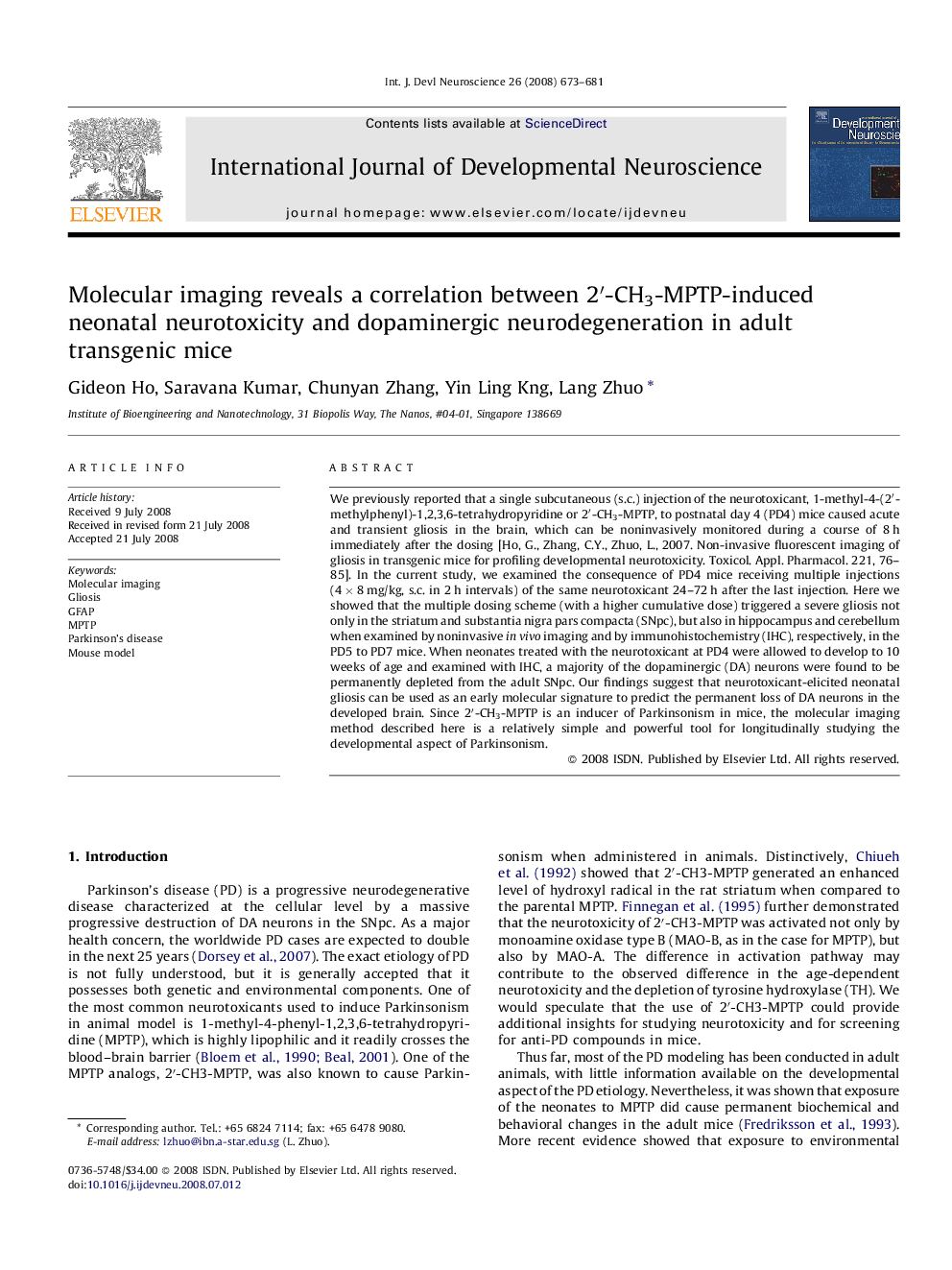| Article ID | Journal | Published Year | Pages | File Type |
|---|---|---|---|---|
| 2786982 | International Journal of Developmental Neuroscience | 2008 | 9 Pages |
Abstract
We previously reported that a single subcutaneous (s.c.) injection of the neurotoxicant, 1-methyl-4-(2â²-methylphenyl)-1,2,3,6-tetrahydropyridine or 2â²-CH3-MPTP, to postnatal day 4 (PD4) mice caused acute and transient gliosis in the brain, which can be noninvasively monitored during a course of 8Â h immediately after the dosing [Ho, G., Zhang, C.Y., Zhuo, L., 2007. Non-invasive fluorescent imaging of gliosis in transgenic mice for profiling developmental neurotoxicity. Toxicol. Appl. Pharmacol. 221, 76-85]. In the current study, we examined the consequence of PD4 mice receiving multiple injections (4Â ÃÂ 8Â mg/kg, s.c. in 2Â h intervals) of the same neurotoxicant 24-72Â h after the last injection. Here we showed that the multiple dosing scheme (with a higher cumulative dose) triggered a severe gliosis not only in the striatum and substantia nigra pars compacta (SNpc), but also in hippocampus and cerebellum when examined by noninvasive in vivo imaging and by immunohistochemistry (IHC), respectively, in the PD5 to PD7 mice. When neonates treated with the neurotoxicant at PD4 were allowed to develop to 10 weeks of age and examined with IHC, a majority of the dopaminergic (DA) neurons were found to be permanently depleted from the adult SNpc. Our findings suggest that neurotoxicant-elicited neonatal gliosis can be used as an early molecular signature to predict the permanent loss of DA neurons in the developed brain. Since 2â²-CH3-MPTP is an inducer of Parkinsonism in mice, the molecular imaging method described here is a relatively simple and powerful tool for longitudinally studying the developmental aspect of Parkinsonism.
Related Topics
Life Sciences
Biochemistry, Genetics and Molecular Biology
Developmental Biology
Authors
Gideon Ho, Saravana Kumar, Chunyan Zhang, Yin Ling Kng, Lang Zhuo,
